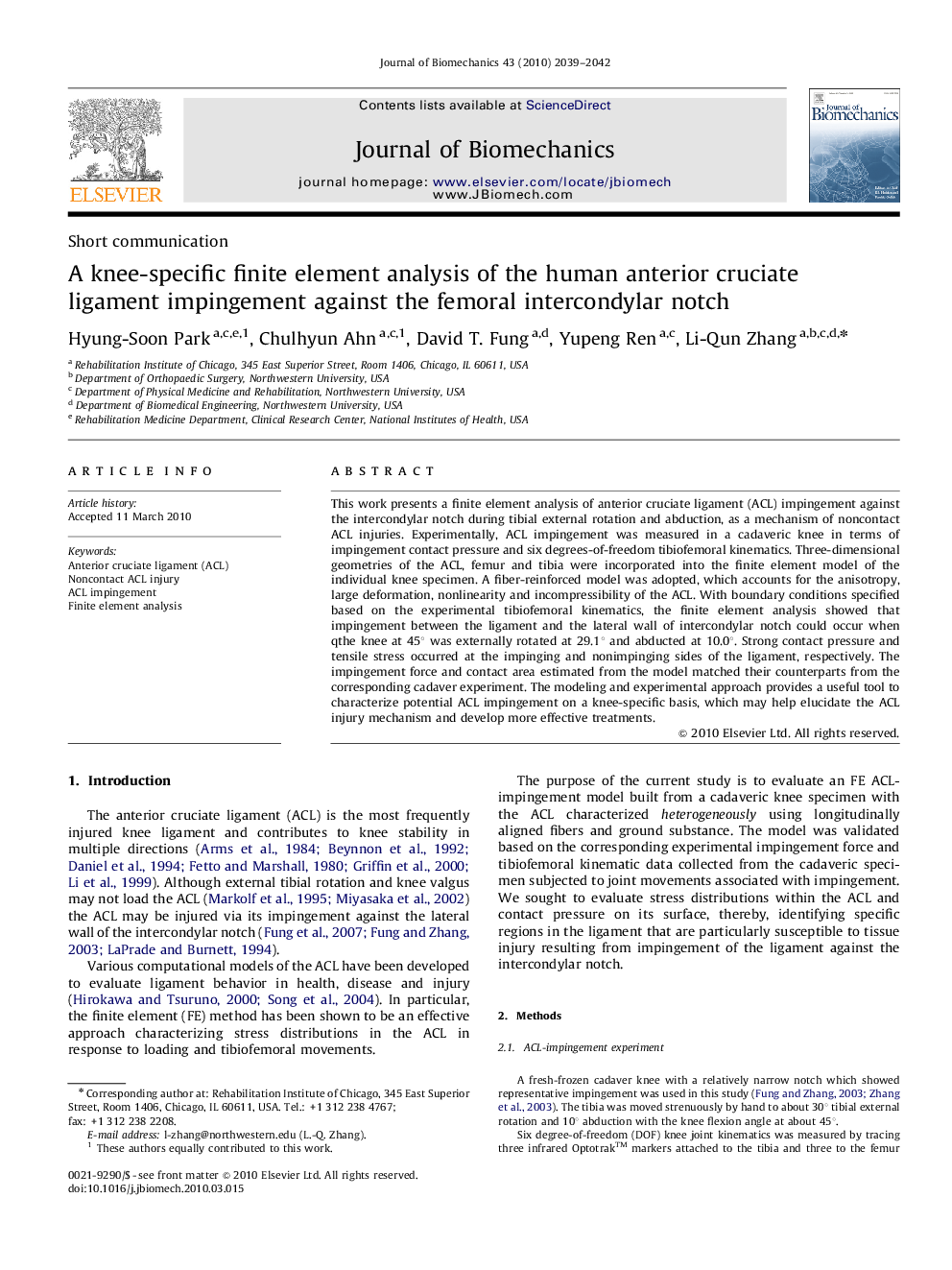| Article ID | Journal | Published Year | Pages | File Type |
|---|---|---|---|---|
| 873344 | Journal of Biomechanics | 2010 | 4 Pages |
This work presents a finite element analysis of anterior cruciate ligament (ACL) impingement against the intercondylar notch during tibial external rotation and abduction, as a mechanism of noncontact ACL injuries. Experimentally, ACL impingement was measured in a cadaveric knee in terms of impingement contact pressure and six degrees-of-freedom tibiofemoral kinematics. Three-dimensional geometries of the ACL, femur and tibia were incorporated into the finite element model of the individual knee specimen. A fiber-reinforced model was adopted, which accounts for the anisotropy, large deformation, nonlinearity and incompressibility of the ACL. With boundary conditions specified based on the experimental tibiofemoral kinematics, the finite element analysis showed that impingement between the ligament and the lateral wall of intercondylar notch could occur when qthe knee at 45° was externally rotated at 29.1° and abducted at 10.0°. Strong contact pressure and tensile stress occurred at the impinging and nonimpinging sides of the ligament, respectively. The impingement force and contact area estimated from the model matched their counterparts from the corresponding cadaver experiment. The modeling and experimental approach provides a useful tool to characterize potential ACL impingement on a knee-specific basis, which may help elucidate the ACL injury mechanism and develop more effective treatments.
